Surgeonfish (scientific name: Acanthuridae), also known as surgeonfish or flower tang, is often nicknamed rough-skinned fish because its skin is as rough as sandpaper. This type of fish belongs to the order Perciformes. Its tail stalk has one or more hard spines, which are as sharp as a surgical scalpel. Once it accidentally touches the skin, it is easy to cause scratches and bleeding, so it is called "surgeonfish".
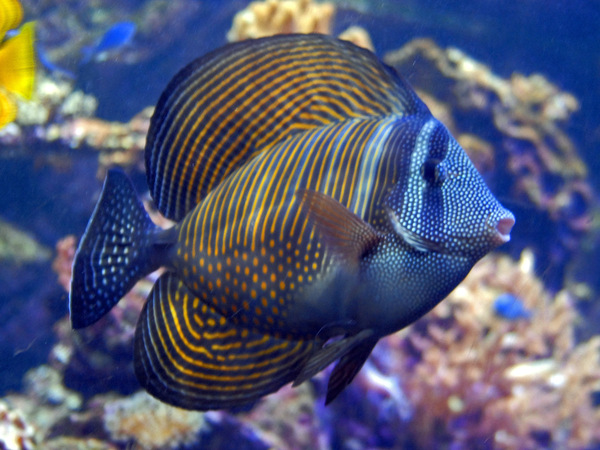
This type of fish is famous for its colorful appearance. So, which surgeonfish is the most eye-catching in appearance? Today, we introduce you to the ten most attractive surgeonfish, including white-breasted surgeonfish, yellow high-fin surgeonfish, yellowtail surgeonfish, Pacific tengu tang, large sail tang, pearl tang, Red Sea surgeonfish, etc. Let's appreciate their style together.
1.Acanthurus leucosternon
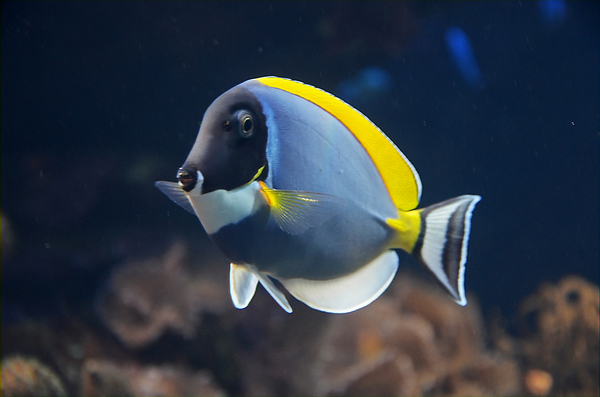
The white-breasted surgeonfish, also known as the pink and blue tang or pink tang, has always been a highly respected star among tang fish species. As the most representative member of the surgeonfish family, it is dressed in a blue coat with a slight pink tint, a bright yellow dorsal fin, a jade-white cheek, and a black "helmet". The overall appearance is very beautiful. Many professional publications or fashion magazine advertisements love to use their images as covers to praise their beauty.

This beautiful fish is easy to raise, likes to actively ask for food, can eat a variety of plant baits, and maintains its body color.
2. Zebrasoma flavescens

Yellow high-fin surgeonfish is also called golden tang, triangular tang, etc. It is a highly regarded ornamental fish in the tang marine fish group. Even non-marine ornamental fish experts can occasionally call out the name of golden tang. It can be said to be one of the tang fish that is popularly raised. This fish is also one of the easiest to maintain.
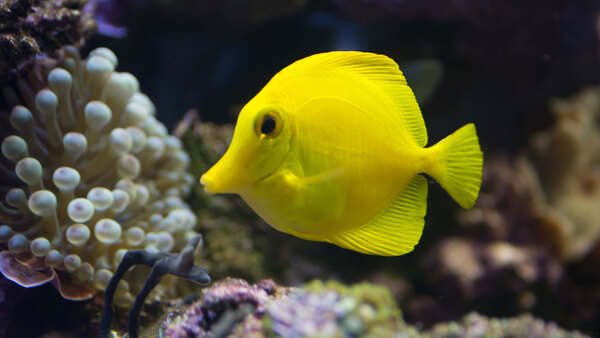
It enjoys a high reputation among marine ornamental fish enthusiasts around the world and is regarded as one of the precious fish loved by almost all marine ornamental fish breeders. In addition, the yellow high-fin surgeonfish is one of the earliest examples of marine ornamental fish domesticated by humans as a companion.
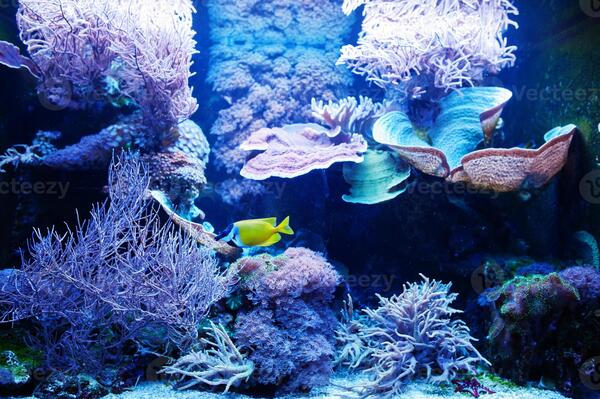
3. Paracanthurus hepatus
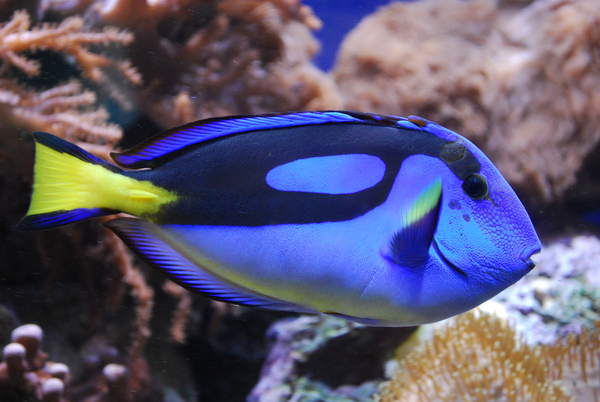
Which varieties of tang fish have the most attractive appearance? I think the yellowtail surgeonfish, also known as the blue tang, is the best choice. This fish is known for its brilliant colors and large size among the tangs, and is considered the bluest blue fish. I believe that viewers who have watched "Finding Nemo" should have been impressed by this fish.
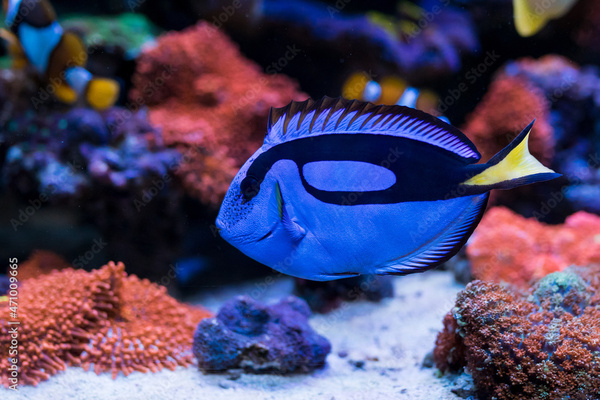
Since the animated film was released worldwide in 2005, the yellowtail surgeonfish has attracted much attention among fish lovers and children in Europe, the United States and even around the world, causing Southeast Asian suppliers to rush to buy it for export, causing its price to rise.
4. Naso lituratus
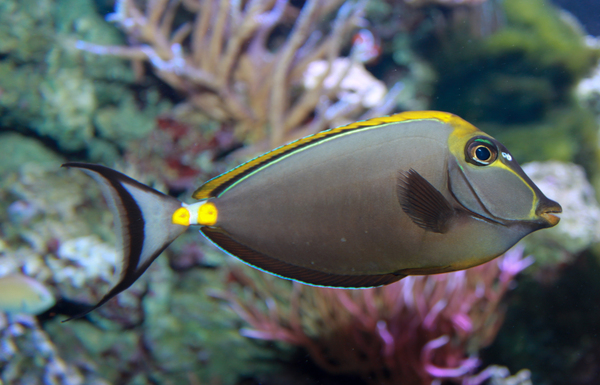
The black-backed nose fish, also known as the Tengu Tang or Pacific Tengu Tang, is a very charming tang fish. It was given the title of "Tengu" because its facial pattern resembles the image of Tengu in traditional Japanese song and dance dramas. Some people even call it the Japanese Tang.

According to the different origins, the tengu tang can be roughly divided into two types: Pacific tengu tang and Indian tengu tang. The two are very similar in appearance, the difference is that the Pacific tengu tang is usually gray-brown and has white markings on the outer edge of the dorsal fin; in contrast, the Indian tengu tang is lemon yellow. As for the Pacific tengu tang produced in the Hawaiian area, it is the most colorful among the same species.
5. Zebrasoma veliferum
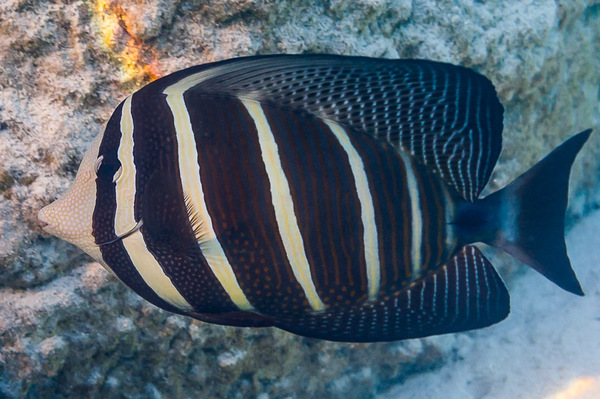
The Pacific Sail Tang, also known as the Big Sail Tang, is known as one of the most charming inverted tang fish. It has a brown body with light brown spots on its mouth. It is oval in shape and covered with eye-catching stripes on the surface, black and white, with five vertical stripes, each stripe presents a complex pattern. The color of the tail gradually transitions from white to brown. When it erects its dorsal fin, it almost doubles in size, as if it were an unfolded sailboat.
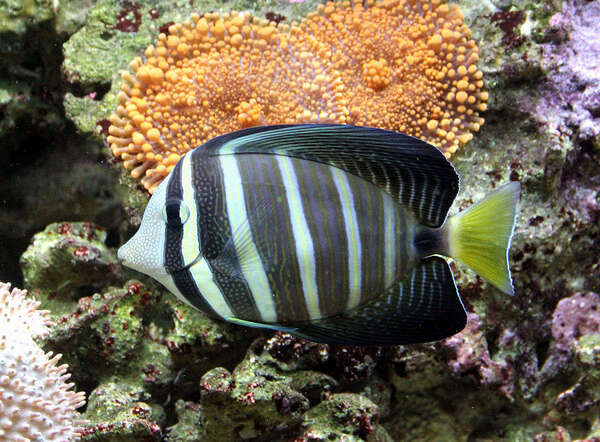
When breeding, Pacific sail tangs like to eat seaweed, shrimps, crabs, and coral polyps. When breeding, make sure that the aquarium has enough swimming space to meet their activity needs.
6. Zebrasoma gemmatum
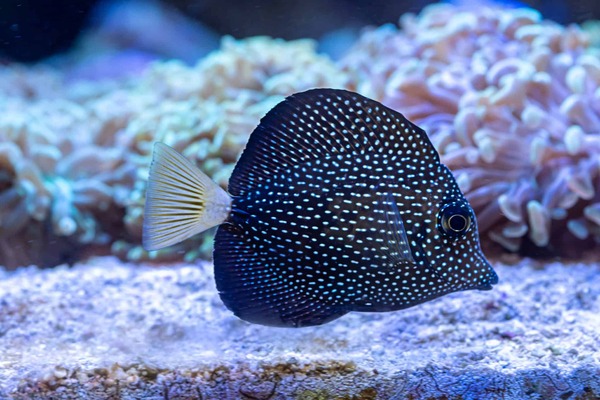
The gem tang, commonly known as the pearl tang or lotus tang, is one of the most popular ornamental fish, with a maximum body length of 22 cm. The adult fish is tall, oval, and slightly flat, with a uniform brown-black color overall. The head, chest, abdomen, sides of the body, and the front of the dorsal and anal fins are covered with gray-white circular spots, hence the name "Pearl tang". The pelvic fins are brown-black, the pectoral fins are gray-yellow and transparent, the anal fins are brown-black, the caudal fins are bright yellow, and the caudal spines are black.

There is not much difference between the juvenile and the adult, mainly in that the dorsal and caudal fins of the juvenile lack spots or have only a few spots. It has always been regarded as a kind of precious fish with a higher price.
7. Acanthurus sohal
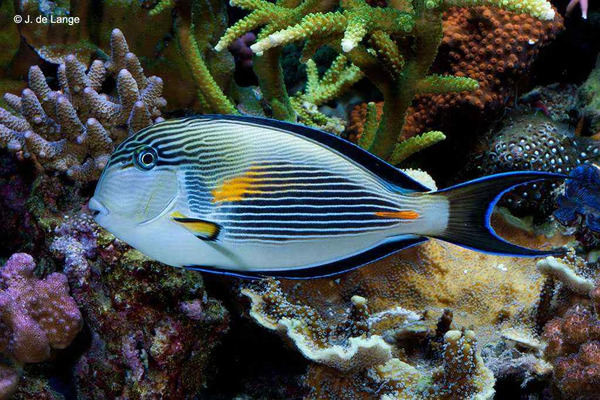
The Red Sea Surgeonfish is highly sought after among the hanging fish and is also known as the Knight of the Red Sea. This hanging fish only grows in the Red Sea area. It is a larger species and is a leader among the surgeonfish. The whole body is covered with slender white vertical stripes, and all the fins except the pectoral fins are black with royal blue edges. Because the origin implements a protection policy on their trade, the annual trade quantity is limited, so the price is quite expensive.

These Red Sea surgeonfish are unique, with a unique crescent-shaped tail fin that makes them the fastest swimmers of their kind. The fish's unique appearance and rarity make them highly collectible.
8. Ctenochaetus hawaiiensis
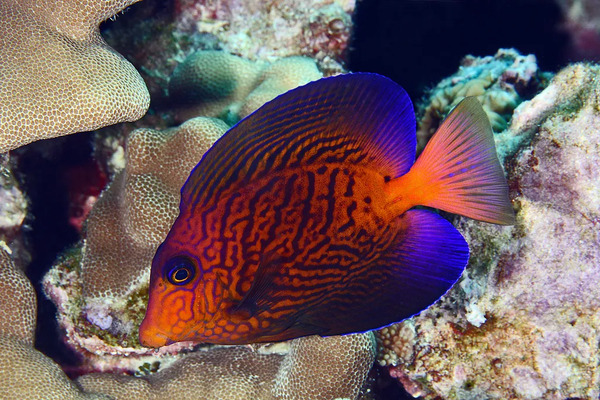
The Flame Tang (Hawaiian Tang) is a rare American fish that is highly valued for its fantastic coloration. This tang can grow up to 25 cm in length, and the adult fish is oval and laterally flattened. As it ages, its body gradually turns orange-red, and its body stripes, dorsal fin, anal fin and tail fin gradually show a purple sheen.
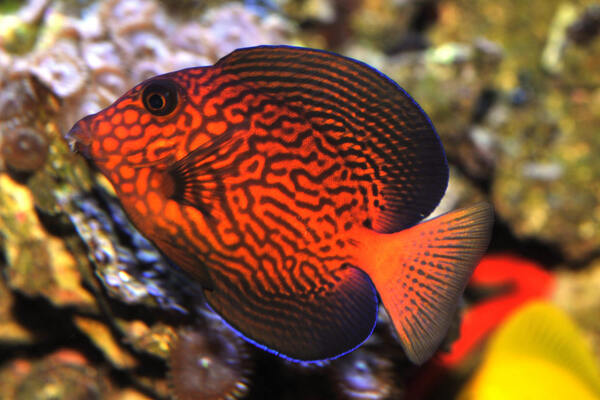
When this tang grows to about 7 cm, the purple color in the body gradually fades and turns into dark green. The lines on the body become denser and extend horizontally, and finally become a green adult fish with dark brown horizontal lines all over the body and pink blue and black spots on the head. This unique and gorgeous color display adds a different charm to the flame tang, which makes people fall in love with it.
9. Acanthurus coeruleus

The purple-blue tang (Blue Tang), also known as the Atlantic Blue Tang, is widely distributed in the coral reefs of the Atlantic Ocean. It likes to live in the cracks of reefs. It can also be found in soft reefs, rocks, seagrass beds and algae beds. Its body is oval, with multiple stripes on both sides of the body. As it grows older, these stripes will change.

The adult fish has a purple-grey body and can reach 39 cm in length. The fins are blue with white edges, the caudal fin is half-moon-shaped, and the base of the caudal peduncle is bright yellow. Juveniles are bright yellow with blue edges on the dorsal and caudal fins. As they mature, the yellow is gradually replaced by blue, becoming more colorful, and sometimes a yellow tail may appear. The color changes and gorgeous appearance of this fish add brilliant colors to the underwater world of the Atlantic Ocean.
10. Acanthurus nigricans
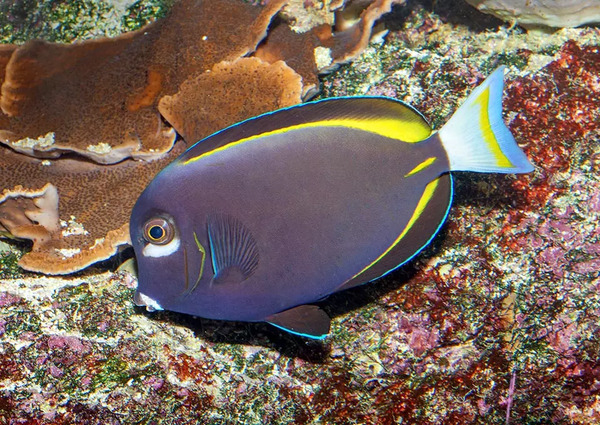
Cheek-faced Tang (White-faced Tang), also known as the five-colored Tang or the flower Tang, is one of the most acclaimed Tang fish, with an adult maximum length of 17 cm. Its body is purple-blue, oval and slightly flattened, with a bright white stripe in the cheek area between the mouth and the eyes, and blue and yellow stripes on the tail. There is a yellow stripe below the dorsal fin and above the anal fin, which is composed of six colors: red, yellow, blue, white, black and brown.
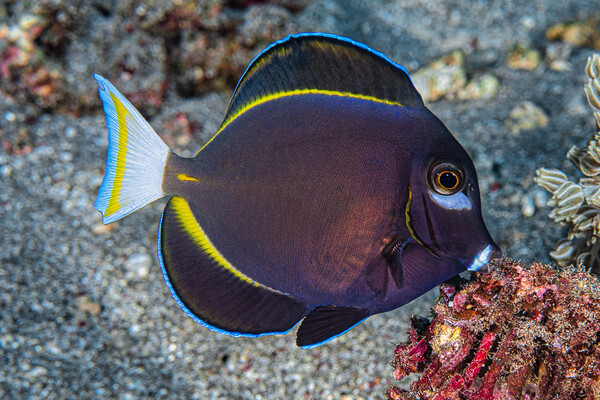
Note when buying: Five-colored hanging fish prefer to live in the lower layer of areas with strong water flow and have a strong sense of possession. It is best to avoid mixing with other fish with strong territorial awareness to avoid territorial disputes.
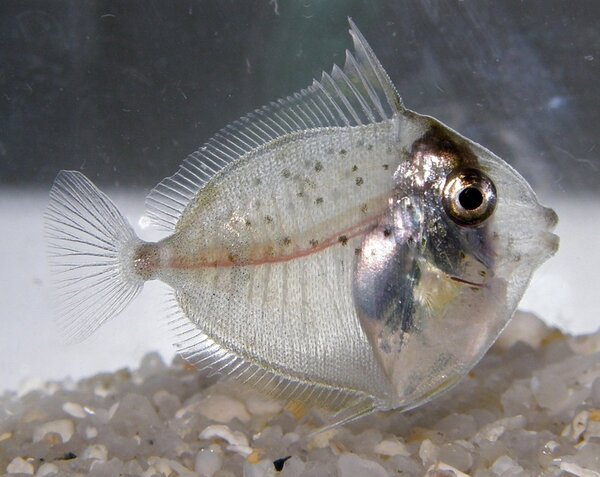
animal tags: Acanthuridae
We created this article in conjunction with AI technology, then made sure it was fact-checked and edited by a Animals Top editor.